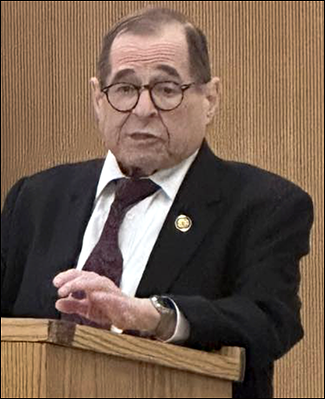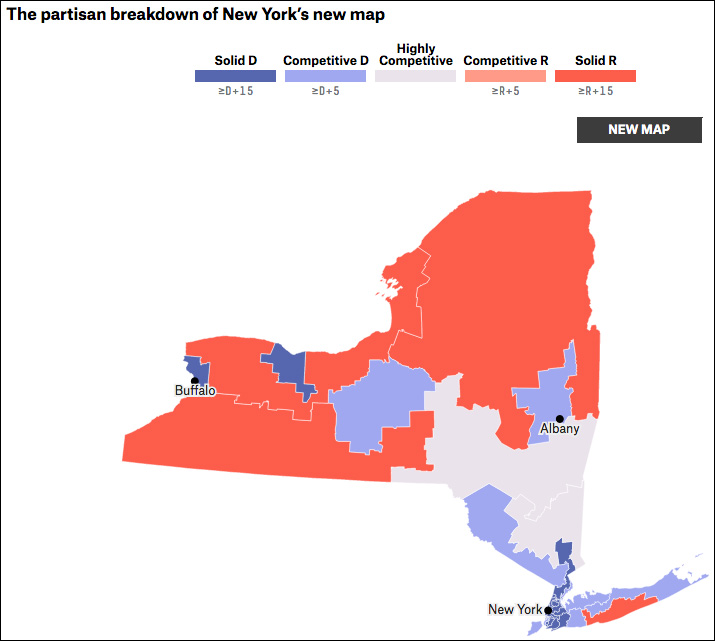By Jim Ellis — Wednesday, Sept. 3, 2025
House
The open seat count in the US House rose to 30 yesterday, at least temporarily, as 17-term Empire State Congressman Jerrold Nadler (D-New York City) announced that he will not seek re-election next year.The decision ends a long New York political career that featured Nadler holding an elected office consecutively since the beginning of 1977 when adding his combined time in Congress and the New York State Assembly.
In an interview with the New York Times, Rep. Nadler indicated that the generation gap was an issue in making his retirement decision. He said, “[w]atching the Biden thing really said something about the necessity for generational change in the party, and I think I want to respect that…” Nadler will be 79 years old when the 2026 election is held.
Rep. Nadler’s 12th Congressional District lies fully within the Borough of Manhattan and contains most of Central Park. It stretches from the island’s western border at the Hudson River across Manhattan to the East River. NY-12 is the smallest area district in the country.
The Nadler departure is likely to leave a very crowded Democratic primary in his wake. With a partisan lean of 83.9D – 13.7R (Dave’s Redistricting App), the Nadler successor will be the eventual Democratic nominee.
Kamala Harris defeated President Trump in the 12th District, 81-17 percent, which was down from President Biden’s 85-14 percent win in 2020. We can expect several state legislators and New York City Councilmembers to enter the race.
Another possible candidate is former NYC Comptroller Scott Stringer, a previous Manhattan Borough President and ex-state Assemblyman. Stringer finished fifth in the 2025 mayoral primary, and while he has had success in winning past New York City elections, his poor electoral showing in the most recent contest isn’t likely to frighten other prospective candidates.
Within the national open seat count, 15 are Republican-held districts as opposed to 12 from the Democratic side. The remaining three are new seats created through the Texas redistricting process. Nadler is the only New York member currently not seeking re-election. Among the 30 opens, only two — MI-10 (Rep. John James-R) and NE-2 (Rep. Don Bacon-R) — can legitimately be considered as toss-up campaigns heading into the 2026 elections.
Four of the opens will be filled in upcoming special elections. Pertaining to the vacating House members, nine are running for the Senate, eight for Governor of their respective state, and one, Texas Rep. Chip Roy (R-Austin), entered the race for state Attorney General. Rep. Nadler becomes the fifth member opting to retire from elective politics.
The open-seat list will recede next Tuesday when the VA-11 special election is held to replace the late Rep. Gerry Connolly (D). Fairfax County Supervisor James Walkinshaw, a former Connolly chief of staff, is the prohibitive favorite to defeat Republican Stewart Whitson, a former FBI agent.
Two weeks later, on Sept. 23, the AZ-7 special election will be conducted to replace the late Rep. Raul Grijalva (D). Former Pima County Supervisor Adelita Grijalva (D), the deceased Congressman’s daughter, is the big favorite to win the vacated seat.
Shortly thereafter on Oct. 7, both Republicans and Democrats will choose special election nominees from crowded fields in western Tennessee’s 7th Congressional District. The eventual party nominees will advance to a Dec. 2 special general election. The winner will replace resigned Rep. Mark Green (R), who left the House to accept a position in the private sector.
The final special election is scheduled concurrently with the municipal election day, Nov. 4, and will occur in Houston’s 18th Congressional District. A large field is competing for the safely Democratic seat, but the eventual winner will immediately find him or herself in a paired incumbent battle with Rep. Al Green (D-Houston), under the newly enacted Texas redistricting map, in an early March 3 primary election.







